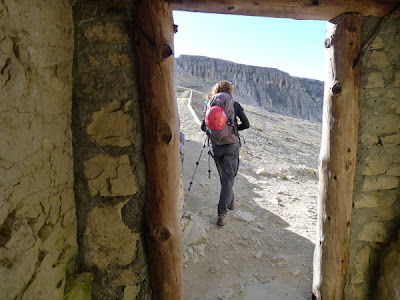Hi there backcountry skiers and snowboarders!
 |
| After the first wet one, Mammoth Mountain 12/3/12 |
followed by high ratio snow dumps with uncharacteristically calm winds. This all gave us a very memorable early season of deep light powder skiing throughout the Sierra. It feels like a distant memory now. January featured it's usual June-uary thaw and began a drought that plagued us all producing record breaking low precip for the two month Jan-Feb time period. March came in like a lamb, and since then it has been highly variable, and unremarkable weather in the Sierra. We have experienced intense warming with little freeze, as well as profound low temps that resulted in some icy and firm backcountry conditions. There has been decent corn skiing for those who have hit it right and/or been willing to carry skis a bit for it. Weak storm systems that split upon reaching our mountains, or just brushed past them produced storms averaging around 2-8 inches of snow at a time and giving us fleeting moments of fun, powdery skiing on top of a mix of
crusts and sugary facets. The winds have finally come to the range with the last storms where winds up to 120 mph were measured. This has smoothed out some sun effects and should help create some decent corn skiing in the coming weeks.
A few highlights to show conditions over the season:
 |
| Negatives 12/19/12 |
 |
False Gibbs & East Peak of Dana 1/8 |
 |
| Green Creek 2/18 |
 |
| Devil's Slide 2/20 |
 |
| Sawtooths 2/26 |
 |
| McGee Creek 3/13 |
 |
| Echo Col 3/26 |
 |
| Ionian Basin 3/26 |
 |
| Hiking with skis and boots up Convict Canyon 4/2 |
Check out the April-September runoff forecast from Edison/DWR:
Bishop Creek: 71% of normal
Rush Creek: 66% of normal
Lee Vining Creek: 60% of normal
Mill Creek: 52% of normal
Kern River: 41% of normal
Kaweah River: 52% of normal
Tule River: 31% of normal
What does this mean for us as backcountry skiers and snowboarders? Well, first of all, get it while you still can. Soon the roads will open and allow a nice wave of access to deeper snowpacks. But it won't last very long, at least not unless we have some sort of unlikely miracle event in May. Until then, target backcountry trips where the snow is, and that is pretty predictable these days.
Here is how I would describe where to find it: The best High Sierra snow coverage is currently located above 10,000 feet, North of the Palisades and just West of the Sierra Crest. The map below shows this graphically, where the green line and above is the approximate area of most snow, the yellow line and above represents marginal coverage, and the red line and above marks hiking terrain. (below the red line is considered foothills/valleys that are obviously snow free at this time)
 |
| High Sierra relative snow coverage map, Tioga Pass to Mt. Whitney |
Be strategic for the rest of the season in planning your ski outings. For example:
- Don't plan on descending below 9000' for very long anywhere in the range, unless you think it is worth the walking.
- Use roads like the one to South Lake or Onion Valley to get a high start.
- Consider carrying a light pair of walking shoes for long stretches of dirt.
- Wait until Tioga or Sonora Pass Roads open so you can start or finish up there.
- Re-route your Sierra High Route to Onion Valley instead of Shepherd Pass.
- Consider looping the Ritter Range High Tour back to Mammoth via the San Joaquin Ridge to avoid the long trail walk down to June Lake.
- Consider a high country basecamp trip instead of a point to point tour to maximize skiing and limit the difficulties of travel.
- Be flexible and wait for a good weather window so you don't add difficulties to the challenge of conditions.
- A good aspect of this touring season is that there will be plenty of access to open water and dry camping. You may be able to go a little lighter on cooking and shelter systems if you plan carefully and coordinate with stable weather.





































